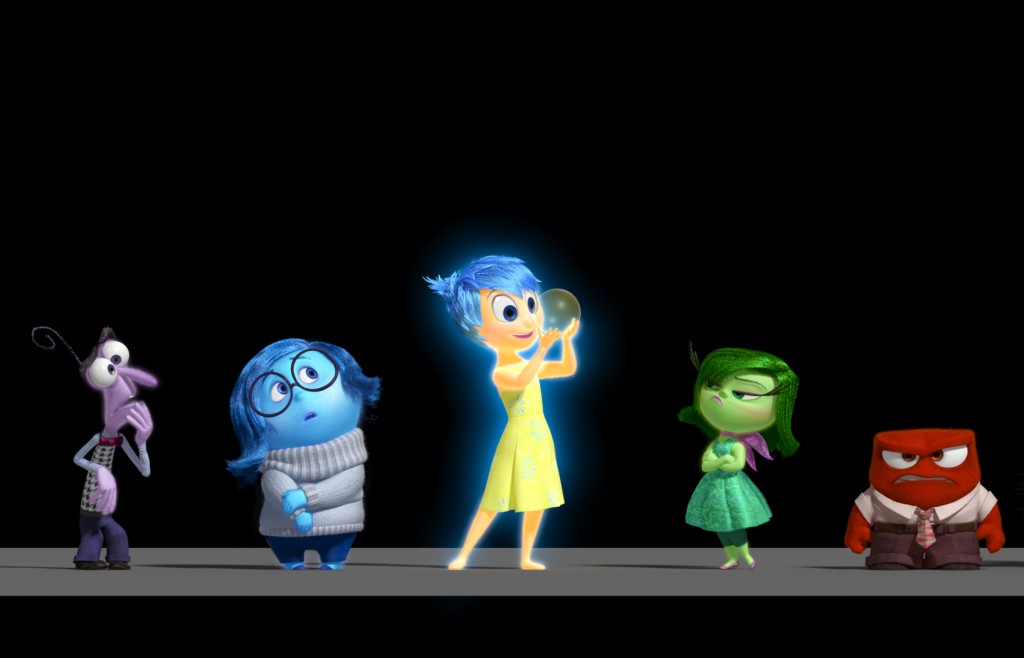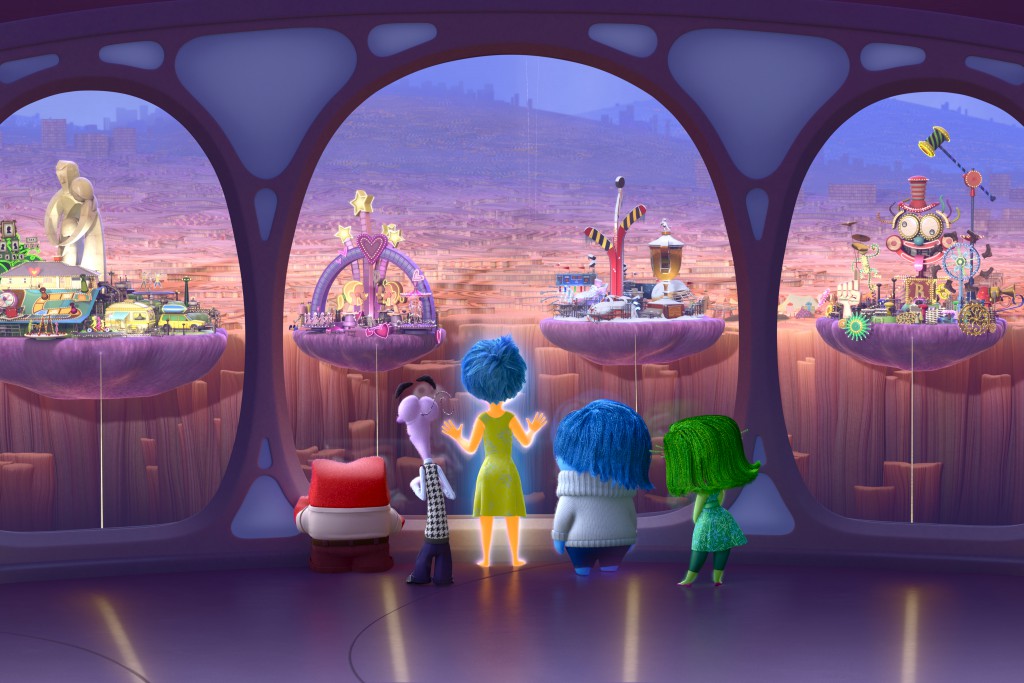Inside Out Week: Interview with Ralph Eggleston
So far in our Inside Out Week, we've spoken with two of the voice actors on the film. Now we take a look behind the scenes and what's it's like to create a world not one of us have ever seen before. FanBoy recently got to talk to Ralph Eggleston, the production designer on Inside Out and a long-time Pixar animator, about creating the inside of Riley's head:
FanBoy: First, congratulations on the success of Inside Out.
Ralph Eggleston: Yeah. Thank you. Appreciate it.
FB: The gap between the films was a little longer than we're used to so I think there are a lot of people excited to see another Pixar film.
RE: Yeah. It's funny. It's the longest thing I ever worked on, that's for sure.
FB: I see that you've been with Pixar since Toy Story, right?
RE: Yeah.
FB: Can you just give us a little brief rundown on some of the projects you've worked on for Pixar?
RE: Toy Story, Toy Story 2, Monsters. Inc, Up, The Incredibles, Finding Nemo, Wall-E, "For the Birds", John Carter, Newt. A little bit of everything.
FB: You've had quite a career. Congratulations on your Oscar.
RE: I worked in LA for 10 years before I got here. I did movie titles in things like National Lampoon's Christmas Vacation and a ton of commercials and all kinds of stuff.
FB: On Inside Out, you obviously worked on all sorts of movies that take place underwater or outer space but with Inside Out you had to go someplace you can't obviously even begin to visit — you can't take a research trip to inside your head. How was that a challenge when it came to creating the world inside Riley's head?
RE: It was insanely difficult and beyond incredibly challenging. What does it look like, number one, and, number two, is how does it function within the telling of the story? We would put something in place and then story would bounce up against it and then we'd have to change it and then we'd change it and then we'd have to bump it up against story and they'd have to change some story... so it was a lot of back and forth that way.
All of our films are like that but on this film, more so than any other. It really was just a never-ending process of figuring out what was working best. There's this phrase: the story is king. I think that's interesting, but it's not really true. It's that storytelling is king. They're two different things.
Coming up with the story is hard enough but telling the story is what the audience is going to respond to and that's the most difficult thing of all. That involves every kind of process that we can think up from storyboarding to art to lighting to texture to modeling to animation to everything. Putting the idea across as clearly and as entertainingly as possible is the hardest thing of all.
FB: Obviously a lot of action takes place in headquarters but the film's a journey and goes through different parts of Riley's psyche. Because you were creating very distinct environments all taking place inside Riley's head, you weren't just creating one part of what's inside the head but you had to do Imagination Land and all the different islands.
RE: All of the above. Yeah. There were long stretches of time where I was trying to find a simple, gettable, holistic way of approaching it so that it was immediately understandable to a wide audience from adults to kids. That was very, very difficult. I can't say we always succeeded. We were finished and people seemed to understand it and it was as big of a surprise to us as it was to anyone I think, that they got it.
That's where a lot of research and discussion pays off. Years and years of it. Surely artwork and storyboards, we have screenings and we talked to John Lasseter and we go around and around and around on it until we talked it to death and drawn it to death and these are the ideas that best communicate what the director is attempting to say. Then you gotta trust that it is, because you just don't know. We do test screenings and adjust from there if we need to to make it as clear as possible but you're hoping and praying that it's going to work.
By the time you finish the film, at least for me, I'm just so sick of it. I've seen the film backwards, forwards, inside out, upside down 5,000 times and I'm just trying to rush to meet the deadline to finish the film. When you get to view it with a real audience for the first time it always takes me aback. If we've done our work right, I can't tell if it works or not anymore, it's not fair. I've seen it too many times but now you get to see it with an audience and you hear their response and they're laughing at things that have long ceased to be funny to me or they're laughing or understanding something or gasping at something that I thought was pretty straightforward and simple and yet they're experiencing it not just new, but they're experiencing it as though it were the world that our characters and the story is taking place in was inevitable and that they're just responding to it as human beings, as something they understand.
This is fascinating to me. It's endlessly fascinating to me. Yeah, it doesn't exist. Somebody draw me the mind. Somebody please tell me what the mind looks like. I said that a lot on this film.
FB: One thing I thought was an example of the film's success is midway through the film, you don't even think about it and it's almost second nature. The world is so believable that, even though none of us have ever been there, we felt like everything made sense, everything looked right. Not just to myself but to my 5-year-old nephew to my 60-year-old mother. It all was believable that that is what inside our mind looks like.
RE: Very cool. That makes me happy.
FB: Is there any sort of specific details that you put into the film that you feel really helped make that it special?
RE: I think maybe a way to think about it is... the opening of the movie, the setting up of that world. The idea that you're introducing, we couldn't just start in the mind and expect people to buy it. They might have eventually just kind of eased into but by showing the world being created when Riley and Joy are born at the same time, like showing that light and energy is what forms this world, you're kind of throwing down the gauntlet to the audience that this is what we're going to do and either they buy it or they don't.
We're lucky they're so entranced with the characters that they buy it enough to get to the next sequence and then they just accept it. These are not tricks that you can plan on working but they're tools of the trade that really help the audience understand what you're attempting to do and you're asking them with visual fun like that, "Please go along with us. Please go. This is what we're going to do. It's a fairly tale in a way. We're going to show you something you haven't seen before and we're begging that you go along with us until it makes sense."
I wish I could say that in the process of making the film it seemed that logical. It didn't. We were figuring it out as we made it. More than any other film I came into work every single day with no fingernails because I was clawing to stay on top of all the tweaks and changes and understanding what the director was after. Everyday my fingers were bloody. It's fascinating. I still have a little bit of PTSD. I'm interested to get a few years away from it and really kind of (a) get to enjoy the film as a film again and (b) really, really get a better grasp and understanding on how incredible Pete's idea was to make this movie in the first place. It's so simple and simple is hard.
FB: I just want to say congratulations on the success. I think it's one of those amazing films that is not only critically successful, commercially successful but perhaps most importantly successful with the general public and it's an instant classic.
RE: I was saying earlier, my sister teaches elementary school in an inner city in Oklahoma and kids speak to her about their feelings through the film now. I got her some of the characters, little stuffed animals of the characters and she has them in the drawer of her desk so that when the students are upset or angry or whatever, she'll bring the characters out and talk to them with the characters. They're much more comfortable expressing themselves through that idea with those characters than expressing them themselves.
That's remarkable. I really love that. That's an important thing the film has kind of, I think it's an important thing that kids are able to do that and it's really something they can identify with and not be ashamed of. It's really great.
FB: As we covered the film all the reports of people that work with autistic youth or youth that have emotional challenges, using the film as a way to speak their emotions was a happy byproduct.
RE: Yeah. It was great. Very cool.
FB: Thank you very much for your time and congratulations once again.
RE: Thank you so much. I appreciate it.
Inside Out is now available on home video.



